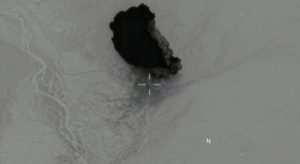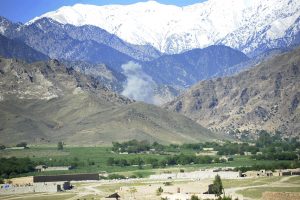
Washington, Apr 14 (EFE).- The Pentagon released Friday video footage of the moment that the GBU-43 bomb, the largest non-nuclear bomb in the US arsenal and one which had never been used until this Thursday, destroyed a complex of caves and tunnels of the Islamic State (IS) in Afghanistan.
The aerial images show the moment when the so-called “mother of all bombs” hit the side of a mountain in the Achin district of Nangarhar province with a explosive power equivalent to 11 tons of TNT.
An immense column of smoke and debris appears after the explosion, which with this kind of bomb occurs in midair, well before it hits the ground, in order to create a powerful expanding shock wave capable of demolishing tunnels and bunkers by setting off a small earthquake.

The video shows with just how much power the expanding wave blasted the remote mountainous area in eastern Afghanistan that the IS, which calls this central Asian region Khorasan – a province of its self-proclaimed caliphate – had made one of its strongholds.
The attack occurred at 7:32 pm on Thursday, and, according to information provided to EFE by Afghan Defense Minister Mohammad Radmanesh, at least 37 IS militants died in the blast.
White House spokesman Sean Spicer said Thursday that the goal was to destroy a system of tunnels and caves that the IS in Afghanistan “used to move around freely, making it easier for them to target US military advisers and Afghan forces in the area.”
The bomb, in the US arsenal since 2003, had only been used in test explosions and was designed not only to destroy bunkers and tunnels, but also as a psychological weapon that leaves its survivors in a state of shock.
